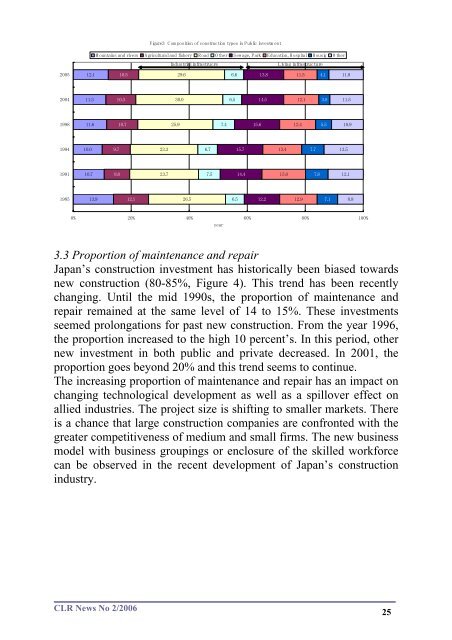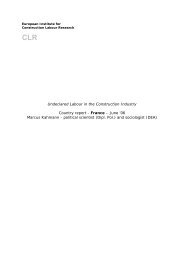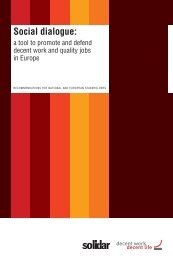Japan – what can we learn? - Construction Labour Research
Japan – what can we learn? - Construction Labour Research
Japan – what can we learn? - Construction Labour Research
Create successful ePaper yourself
Turn your PDF publications into a flip-book with our unique Google optimized e-Paper software.
Figure3 C om position of construction types in Public investm entMountains and rivers Agriculturaland fishery Road Other Sewage,P ark Education,H ospital Housig OtherIndustrialinfrastrucreLiving infrastructure200512.110.529.66.613.811.54.111.8200411.310.330.06.514.512.13.811.5199811.610.725.97.415.612.45.510.9199410.09.723.36.715.713.47.713.5199110.78.823.77.514.415.07.812.1198513.912.126.56.512.212.97.18.80% 20% 40% 60% 80% 100%year3.3 Proportion of maintenance and repair<strong>Japan</strong>’s construction investment has historically been biased towardsnew construction (80-85%, Figure 4). This trend has been recentlychanging. Until the mid 1990s, the proportion of maintenance andrepair remained at the same level of 14 to 15%. These investmentsseemed prolongations for past new construction. From the year 1996,the proportion increased to the high 10 percent’s. In this period, othernew investment in both public and private decreased. In 2001, theproportion goes beyond 20% and this trend seems to continue.The increasing proportion of maintenance and repair has an impact onchanging technological development as <strong>we</strong>ll as a spillover effect onallied industries. The project size is shifting to smaller markets. Thereis a chance that large construction companies are confronted with thegreater competitiveness of medium and small firms. The new businessmodel with business groupings or enclosure of the skilled workforce<strong>can</strong> be observed in the recent development of <strong>Japan</strong>’s constructionindustry.CLR News No 2/200625









